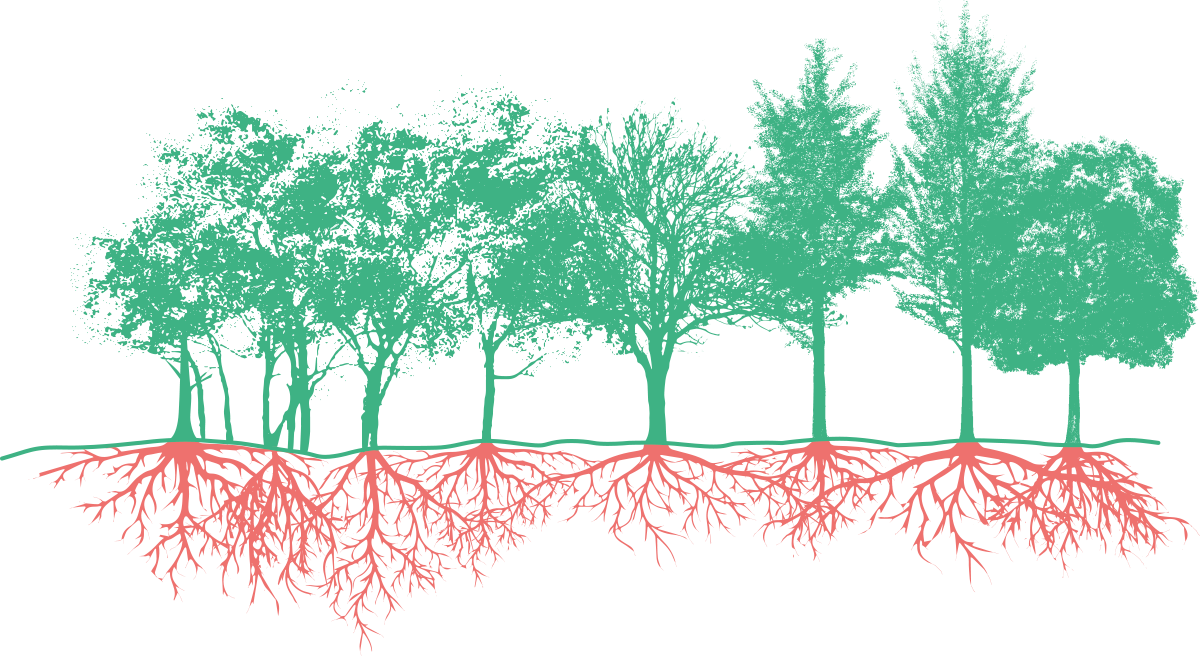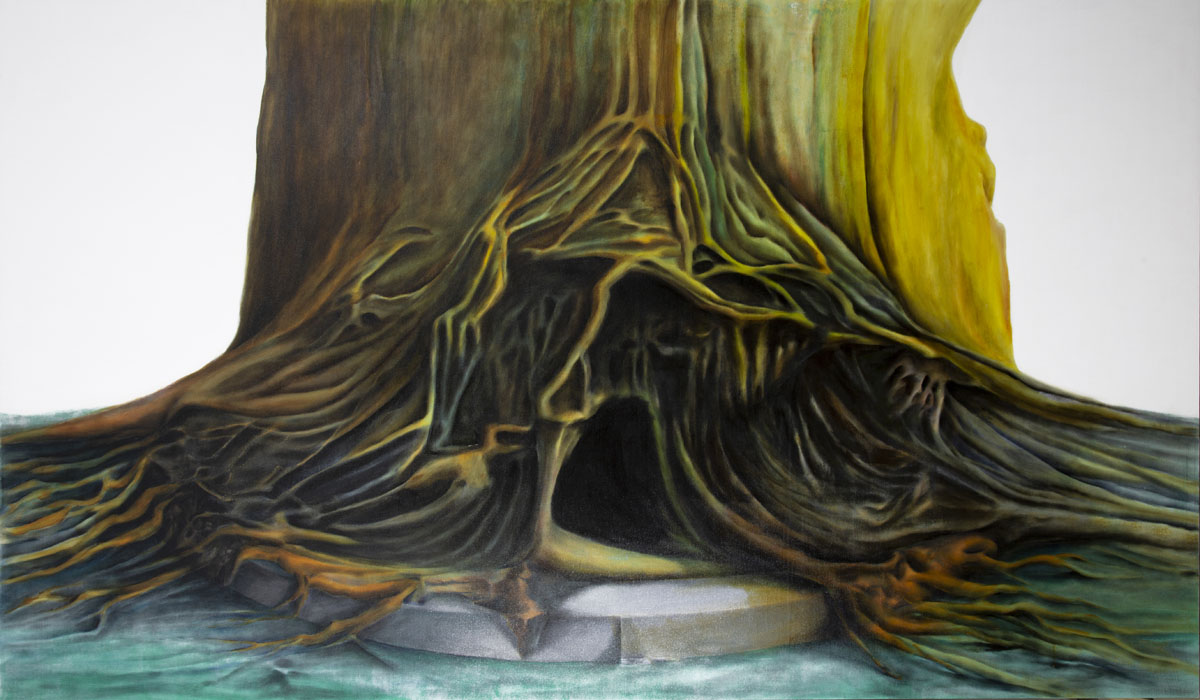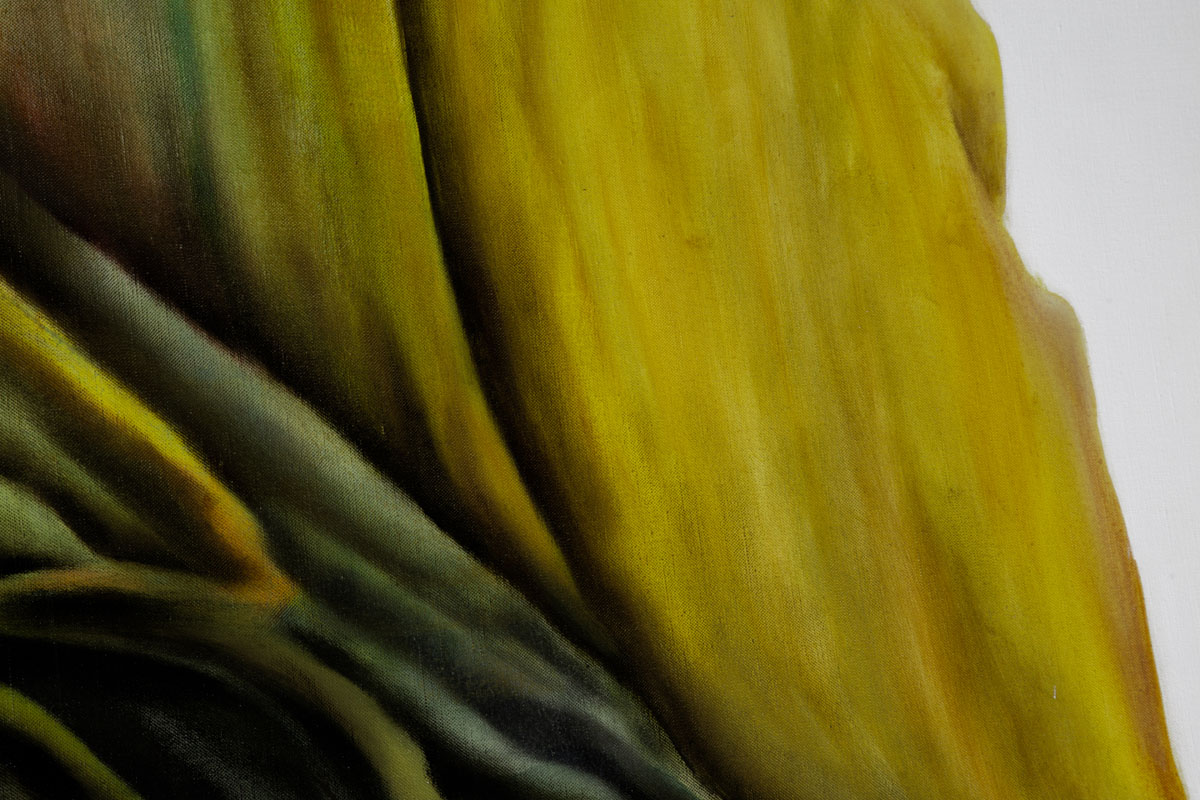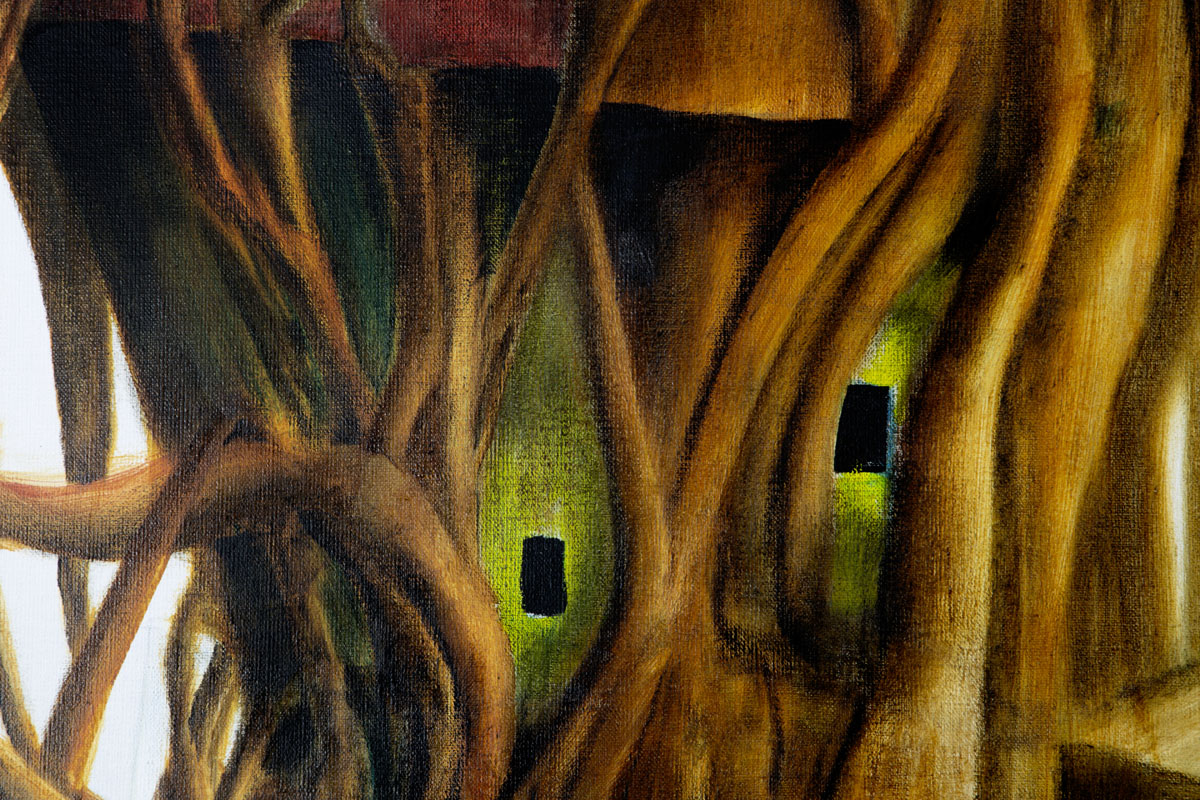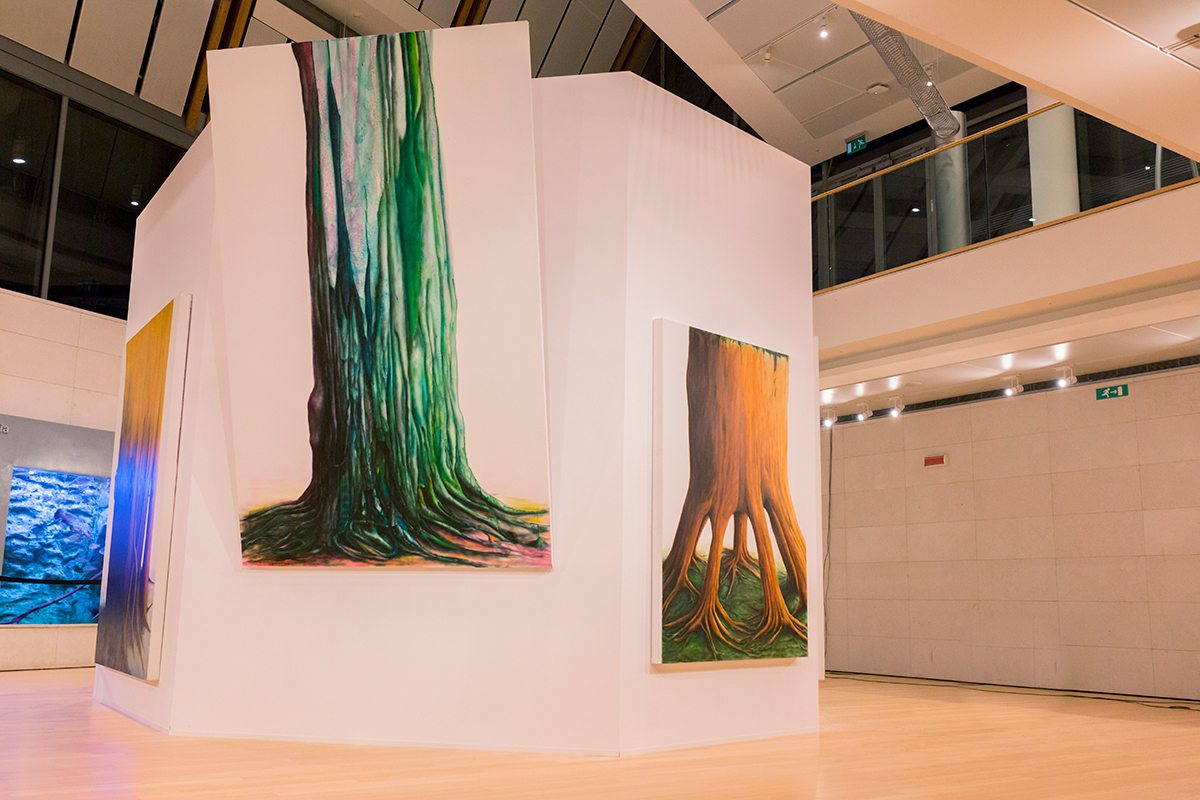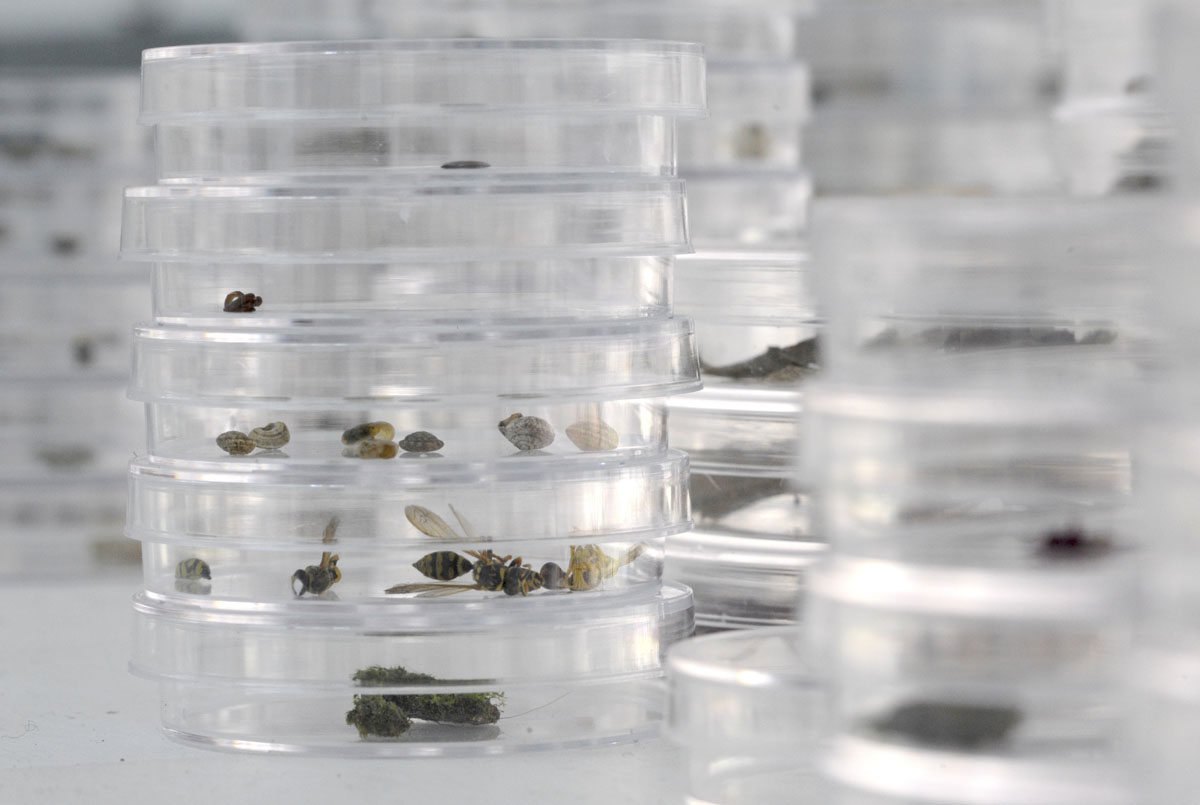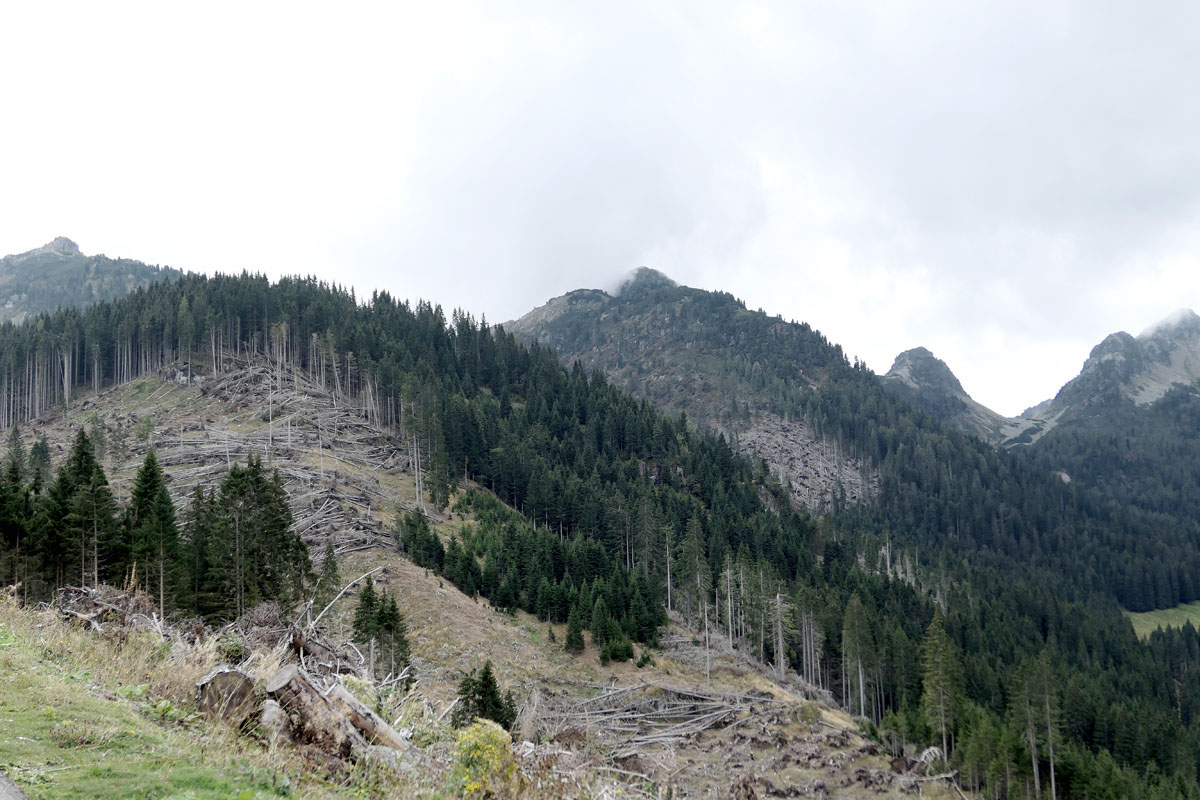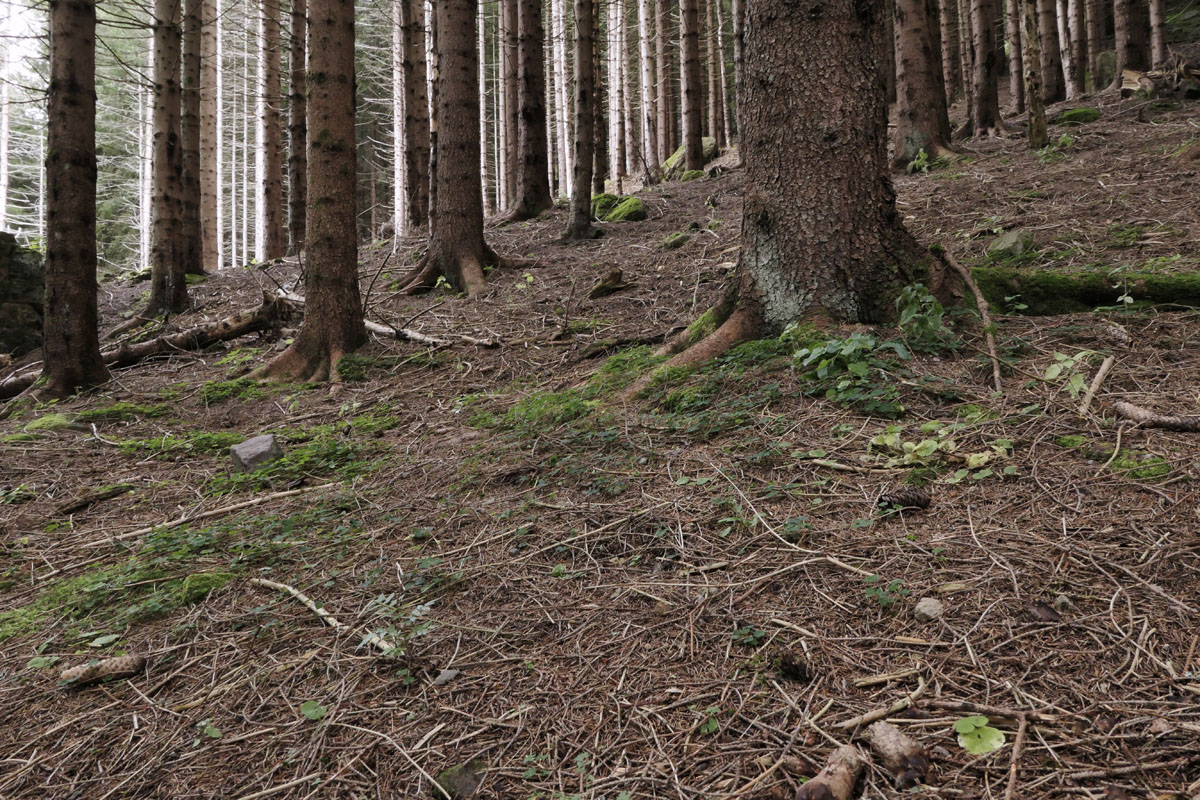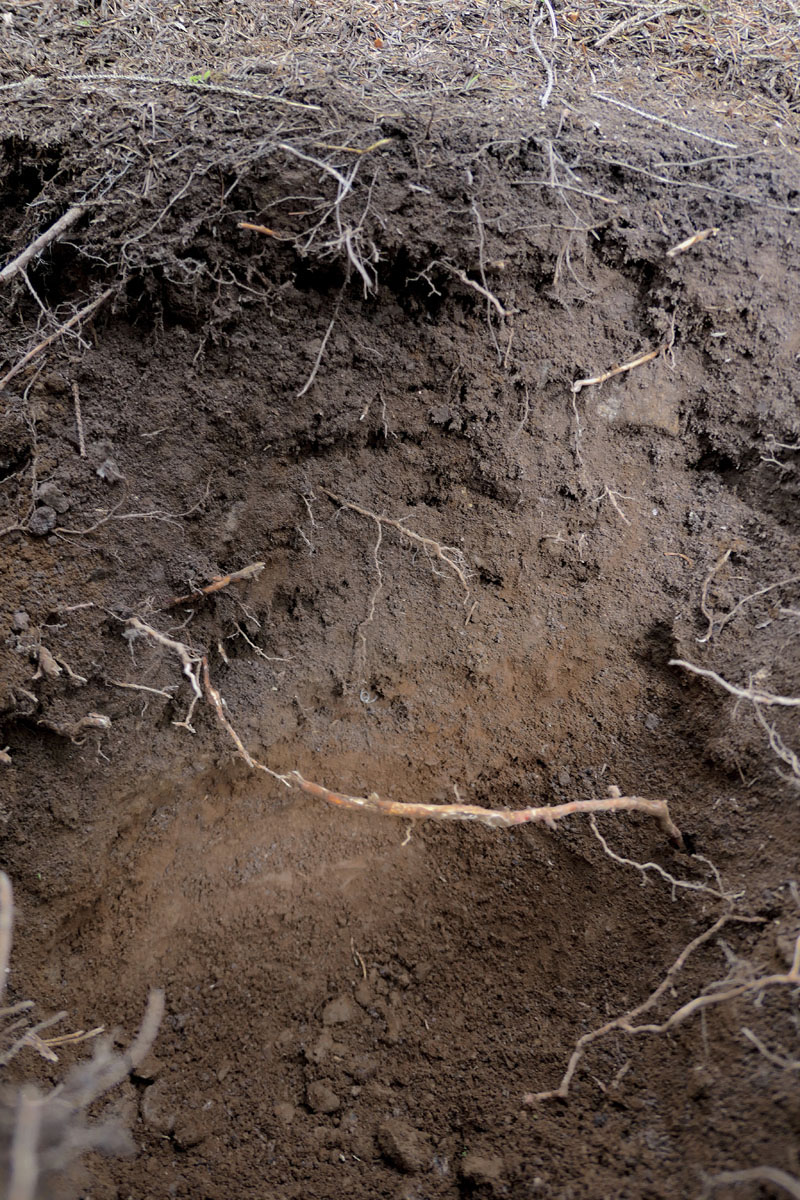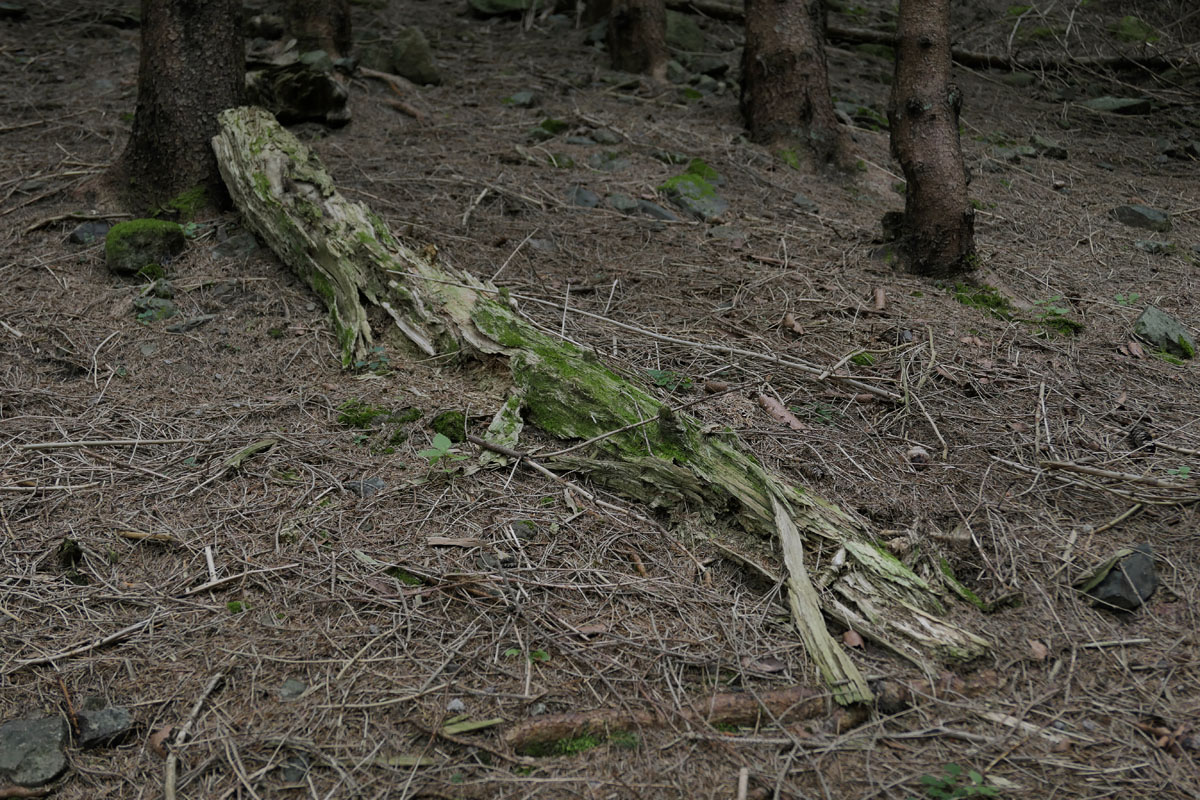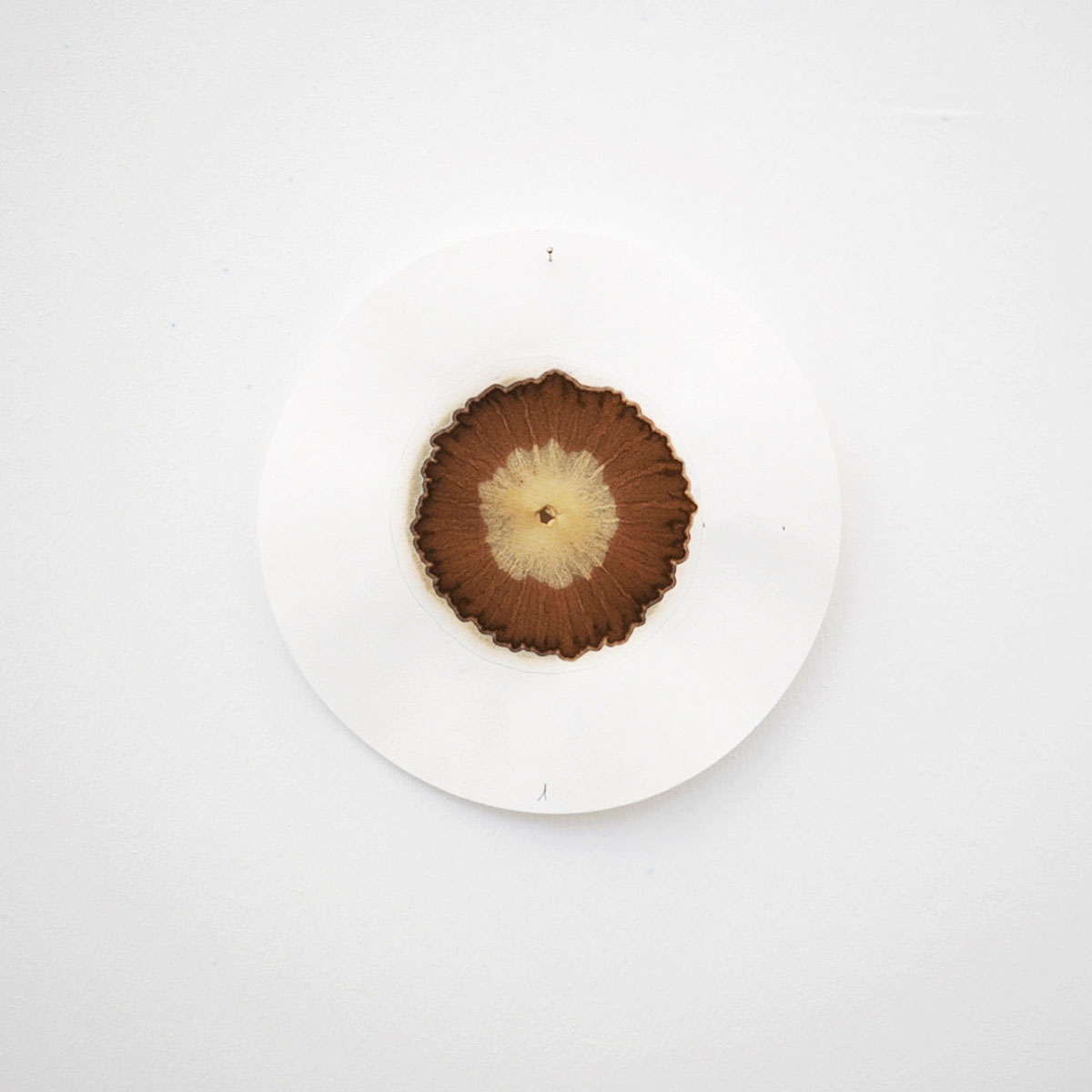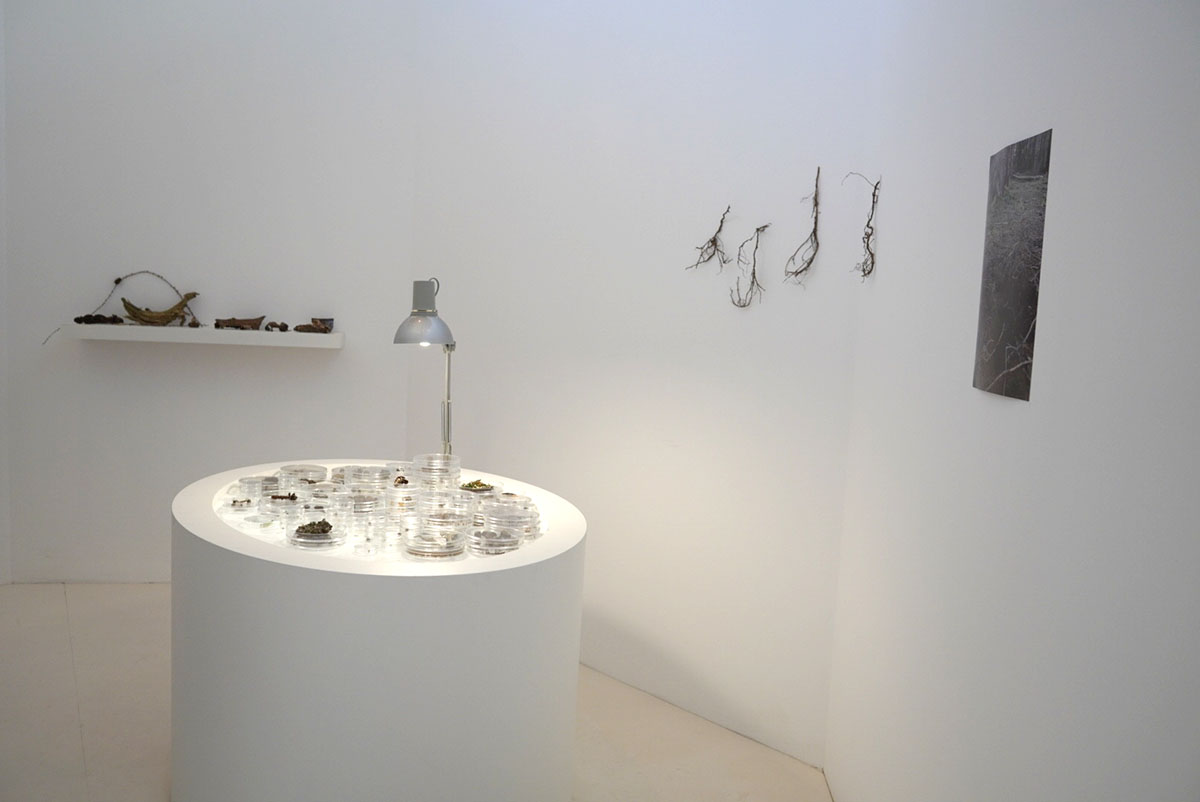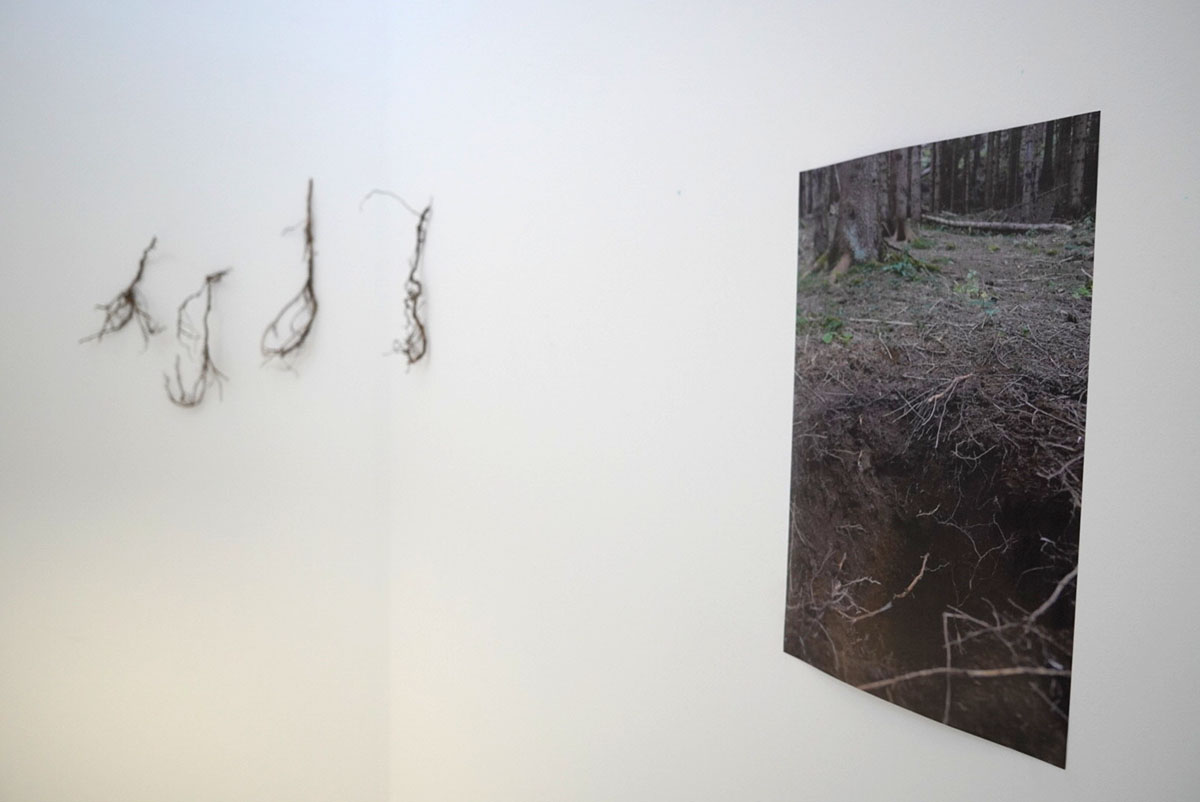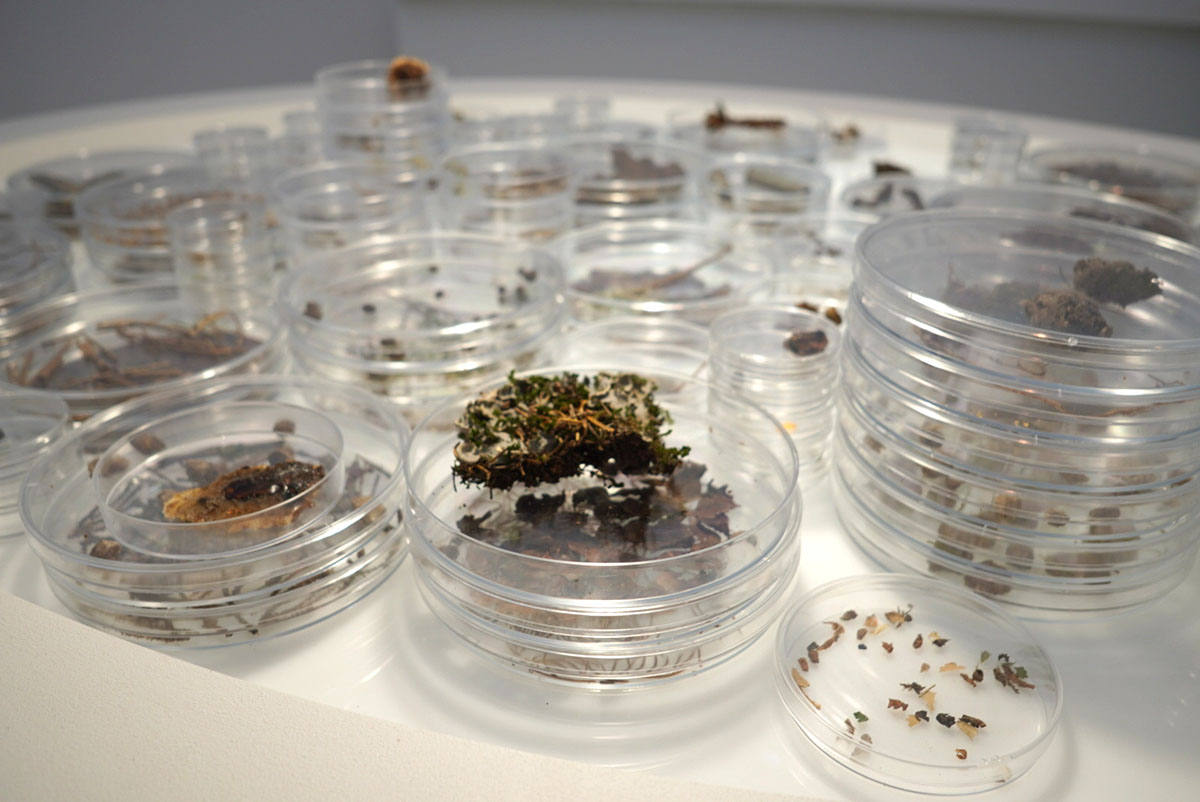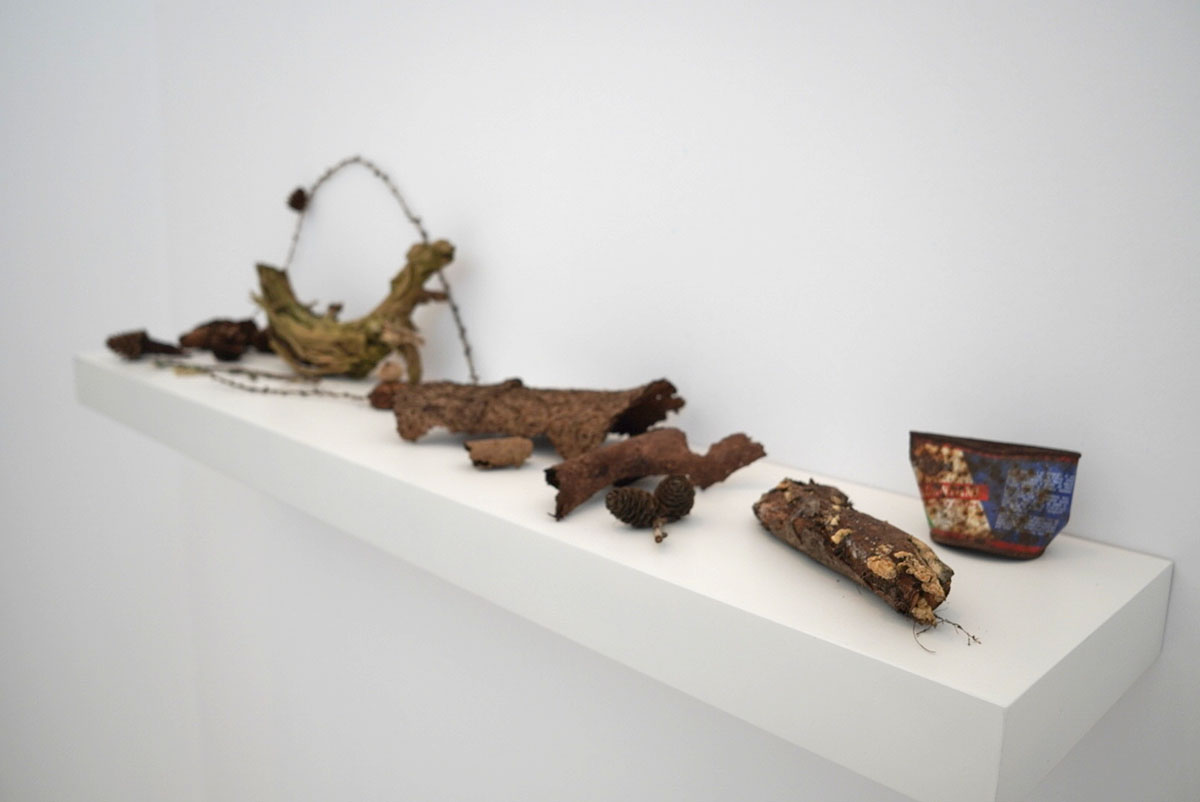Roots: stronger than a rock, larger than a house, older than a city
Daedalus, Icarus and Helios. These evocative names are not only used to refer to the mythological creatures they were originally created for, but are also names of the tallest California redwoods (Sequoia sempervirens), including Hyperion, the tallest tree in the world with a height of 115.92 m! Trees are the organisms that better connect our earth, intended as a terrestrial ecosystem, with the air and the sun light above us. What happens above ground is well known: it is visible, it can be photographed, it can be experienced by people and studied by scientists with relative ease. What is not well known about these organisms that outnumber, outlive and outsize humans is their invisible underground organ: the root system. Maybe because they are unknown and invisible, roots have always captured man’s imaginary: from the ancient druids to the works by Salgari, cavities in trees allow access to the underworld through hollowed roots. One common misconception is that of root systems being a mirror image of the top part of trees: if that were true California redwoods would have a 100 m deep root system, well (and improbably) into the bedrock! In reality, most primary roots are within 1-3 meters from the surface, even for deep-rooted tree species. Redwoods and other shallow-rooted tree species like Norway spruces produce instead shallow (1 m or less in depth) and far-reaching roots, extending 10 or more meters away from the trunks. These shallow but extensive roots are better adapted to the shallow rocky coastal, high altitude or steep mountain soils. By extending several meters away from the tree, they provide the mechanical support these giants need, but, at the same time, shallow root systems provide formidable braces holding the top layers of the soil together and preventing erosion. By growing underground, they also grind stones they are in contact with and increase the depth of fertile fine-grain soils. When cutting trees to use the wood in their trunks, we unwittingly kill their underground root systems, destabilizing the slopes in which these trees were growing. There is a third, amazing function provided by root systems: the roots of one tree often graft and fuse with the roots of neighboring trees belonging to the same species, creating an amazing and single underground network, used by all trees in a stand to share resources, and to signal the early detection of pests and diseases. In this light, trees are not simply individuals, but belong to a community of interconnected organisms. Trees were thus the first “social” organisms to evolve on our planet, way before than social insects and much earlier than social animals including humans. When looking at hundreds to trees in a stand, don’t forget they are all member of this interconnected community: by studying grafted roots, it has been estimated that some of these interconnected communities are several tens of thousand years old!
“Roots are truly the hidden half of trees. They are unique as they bear the weight and support the life of the upper part of trees, but they also spend their life as individual organisms: they develop, they breath, they die.”
Paolo Gonthier
University of Turin, Italy
A call from...
Matteo Garbelotto
Director at the Forest Pathology and Mycology Lab in Berkeley and adjunct professor at the Environmental Science, Policy and Management Department of the University of California.

Of roots, fungi and thieves...
Like all photosynthesizing plants, trees harness the energy of the sun and combine that energy with water and carbon to generate nutritious carbohydrates. Trees do that more efficiently than other plants and use a significant amount of the carbohydrates they synthesize to produce wood fibers that allow them to reach their impressive stature. However, tree growth is strongly limited by the scarce availability of life-essential micronutrients, of nitrogen and of phosphorous. Mycorrhizal fungi are given carbohydrates by trees so that they can produce a myriad of microscopic filaments that are fully interconnected with the fine roots of trees and effectively enlarge the size of the root system of trees and increase their absorbing ability by hundreds of times. This is an amazing symbiotic relationship, i.e. a relationship that is beneficial to both groups of organisms. Thanks to the tree, in fact, mycorrhizal fungi, are ensured all the energy they need to grow underground where there is no sunlight for photosynthesis, while trees are provided those elements that -although essential- are either scarce or cannot be readily absorbed directly by their roots. It has been proven scientifically that without mychorrizae, trees would only be as tall as shrubs. This critical relationship occurs, often invisible to the eye, at the tips of growing root systems. The fungus has to perfectly connect its rudimentary vascular system to the vascular system of the tree and it does so by infecting the root tips and by producing a sheath around them, under which plant and fungus cells are interconnected. Later on, the fungus, thanks to the tree carbohydrates, will produce a huge number of extremely long fine filaments called “hyphae” that can explore a much larger volume of soil and have the ability to absorb scarce elements. Once the nutrients reach the root tip, they are distributed to the tree through the mycorrhizal association. In many conifers, the thick white root tips that are visible when pulling out a young tree are not simply roots, they are actually fungal sheaths encasing the plant root tip that becomes invisible under it. These mycorrhizal associations are established almost immediately after the seed germinates, and in the early stages of a tree life, the fungus actually can accumulate more of the carbohydrates produced by the young tree, than the tree itself! Trees do not necessarily share this large amount of carbohydrates with fungi, out of generosity, but because mycorrhizal fungi also protect roots from drying when water is scarce, and provide a defensive shield against the many root pathogens that inhabit the soil. These benefits ensure survival of a young tree, which in later stages will be able to produce enough carbohydrates to grow tall and to support the fungal symbiont (including the production of its fruiting bodies known as mushrooms) without being penalized energetically. Like the network of roots grafted together, mycorrhizal fungi create an even bigger underground interconnected network, and fungal filaments have been shown to further prevent soil erosion and to increase its ability to absorb water. But mycorrhizal networks are also responsible for the creation of a societal interconnectivity not only among trees of the same species, but also with trees and plants belonging to different species. This interconnectivity normally favors all of its members, however some plants have discovered how to use it to their advantage: they do not provide carbohydrates to the fungal symbiont, instead they “steal” the carbohydrates that the fungus has already received from another symbiotic host plant for their own use. These thieves are often recognizable because they lack or they produce little chlorophyll.
“A forest is made possible by its fungi, and the diversity and complexity of forest systems is greatest below and not above ground.”
Thomas D. Bruns
University of California, Berkeley
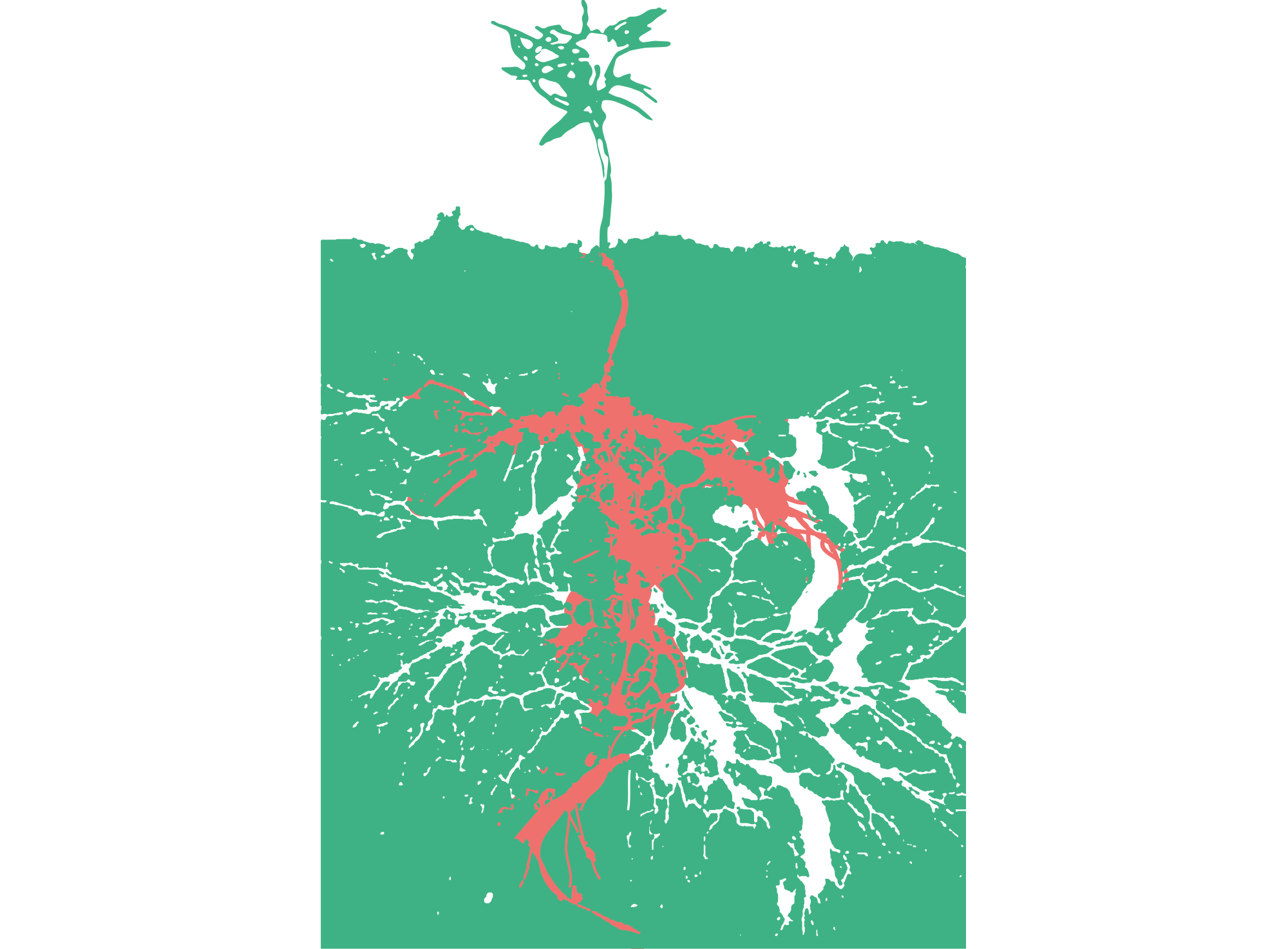
The root system of these pine seedlings is visible for its brown – yellow color.
The white part of the root system, is entirely made up of the fungal mycorrhizal symbiont. Round fluffy circles are points where the tips of pine roots and the fungus are interconnected. The size of the fungal part of the root system (in white) is much larger than the plant component (in red) during the early life stage of a tree.
Solutions to global challenges may be found looking down, not up!
A healthy tree must have a healthy canopy and an equally healthy root system. A healthy root system needs to be mechanically sound to support the enormous weight of the tree, but it also needs to be functionally healthy, to ensure that the canopy and its foliage receive all of the nutrients and the water that is necessary to photosynthesize. When healthy, trees not only grow to be the tallest and oldest living organisms, but are also keystones of the earth’s biodiversity. In recent years, humans have also realized that through photosynthesis, trees act as one of the most important carbon sinks, reducing the concentration of greenhouse gases and slowing down global warming. Although photosynthesis occurs in the foliage, oxygen, carbon and sunlight are certainly not limited in availability. Thus, it is fair to state the photosynthesis is a process largely regulated by temperature, water and the availability of nutrients. Nutrients essential for photosynthesis and plant growth are often scarce or present in a form that cannot be absorbed directly by plants, hence the critical role played by microorganisms in and around the roots, where nutrients and most of the water are absorbed. Mycorrhizal fungi and other symbiotic organisms, like nitrogen fixing bacteria, make photosynthesis an extremely carbon-negative process, meaning that trees absorb more carbon than they release. Water availability is also critical for an efficient photosynthetic process, too little or too much water can be deleterious for the physiology of a tree, strongly limiting its growth and carbon-absorbing potentials. Mycorrhizae and soil bacterial communities play a key role in the water balance of plants. Soil microbial communities in general are responsible for the amount of water that can be stored through capillary action, among the small soil particles. This is called “green water” and is an additional and key source of hydration for plants in addition to the better known “blue water” present in rivers, lakes and reservoirs. It has been recently predicted that our ability to increase blue water will be insufficient globally, given the increase in global human population and industrialization, and given the effects of climate change on water resources. Increasing green water remains the best option to reach a sustainable higher plant productivity, including that of trees. Healthy forest soils, with diverse plant communities are normally associated with richer soil microbial communities and higher amounts of green water. Healthy root systems can take full advantage of this green water. Roots are not as deep as generally thought, and a well-oxygenated soil is necessary for their growth and for the growth of beneficial microbial communities. Soil compaction, excessive logging, the planting of exotic tree species all represent serious threat to the ability of our forest ecosystems to adapt to a changing world. Root diseases are extremely favored by all three major disturbances above, and, once established, they can never be eradicated. As root diseases increase their presence, the ability of trees to grow full lives and to absorb carbon both decrease. At times, some root diseases will strongly affect regeneration of trees, effectively taking out one or more species from that mix that makes forest more resilient to climate change. Just recently in California, it has been discovered that the root disease caused by the fungal pathogen Heterobasdion occidentale, strongly favored by excessive logging, kills adult giant sequoias and seedlings of coastal redwoods, two of the oldest and largest living organisms in the world. A true solution to climate change has to include all those forest managements practices that limit root diseases and favor richer soil microbial communities. Let’s look down so we can look up at a better future.
“The health of forests is sustained by the health of the soils in which they grow. The health of soils is sustained by microorganisms that enhance green water availability and endow forests with resilience against drought and disease.”
Garrison Sposito
University of California, Berkeley
Matteo Garbelotto
Director at the Forest Pathology and Mycology Lab in Berkeley and adjunct professor at the Environmental Science, Policy and Management Department of the University of California.
Fungal pine pathogens belonging to the genus Heterobasdion become established through infection of freshly cut stumps, proceed to infect neighboring healthy trees through underground root contacts, they kill trees and restart the infection cycle. After a few cycles, pines may not be able to grow in the infested site.
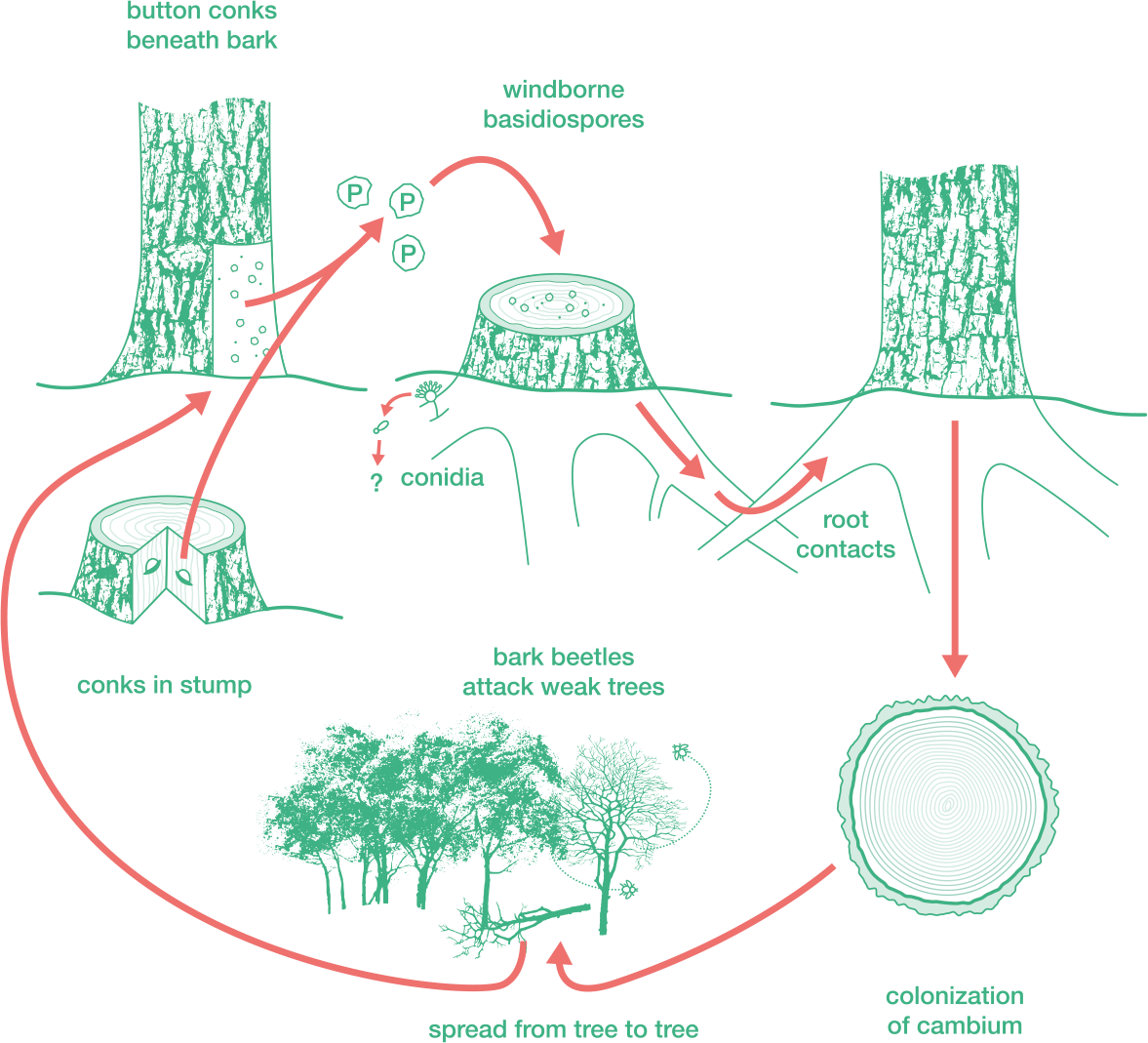
Trees act as carbon sinks only if they can grow well. Vigorous growth requires healthy canopies and roots, combined with rich soil microbial communities. The fungus Heterobasidion becomes established through infection of stumps created by logging operations. Roots of trees growing near stumps are infected and killed and pines can no longer grow where this fungus becomes established, thus obliterating the carbon sink function provided by healthy growing trees.
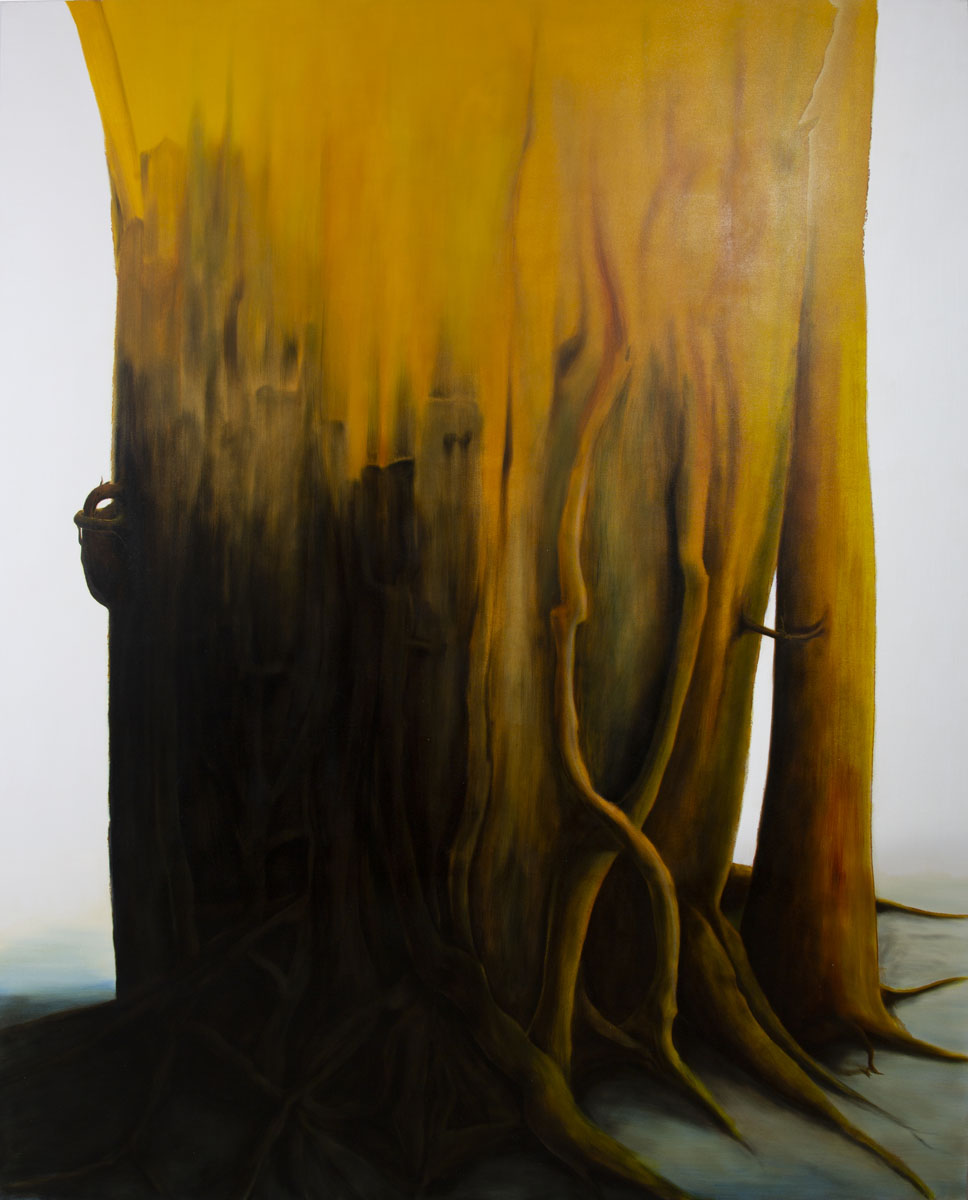
SIMONE BERTI
http://www.simoneberti.info/The paintings on display are part of a body of new works. This series is based on the artist’s personal interest in centuries-old trees, as well as influences from the novel “Nausea” by Jean-Paul Sartre. Sitting before the roots of a chestnut tree, “this black, knotty mass, entirely beastly”, the main character in the book, Antoine Roquentin, perceives an “excess of existence” that creates a sense of nausea within him. Building on his fascination, Simone Berti explores the extraordinary underground world of roots. The artist interprets this magical and feverish universe through highly imaginative painting.
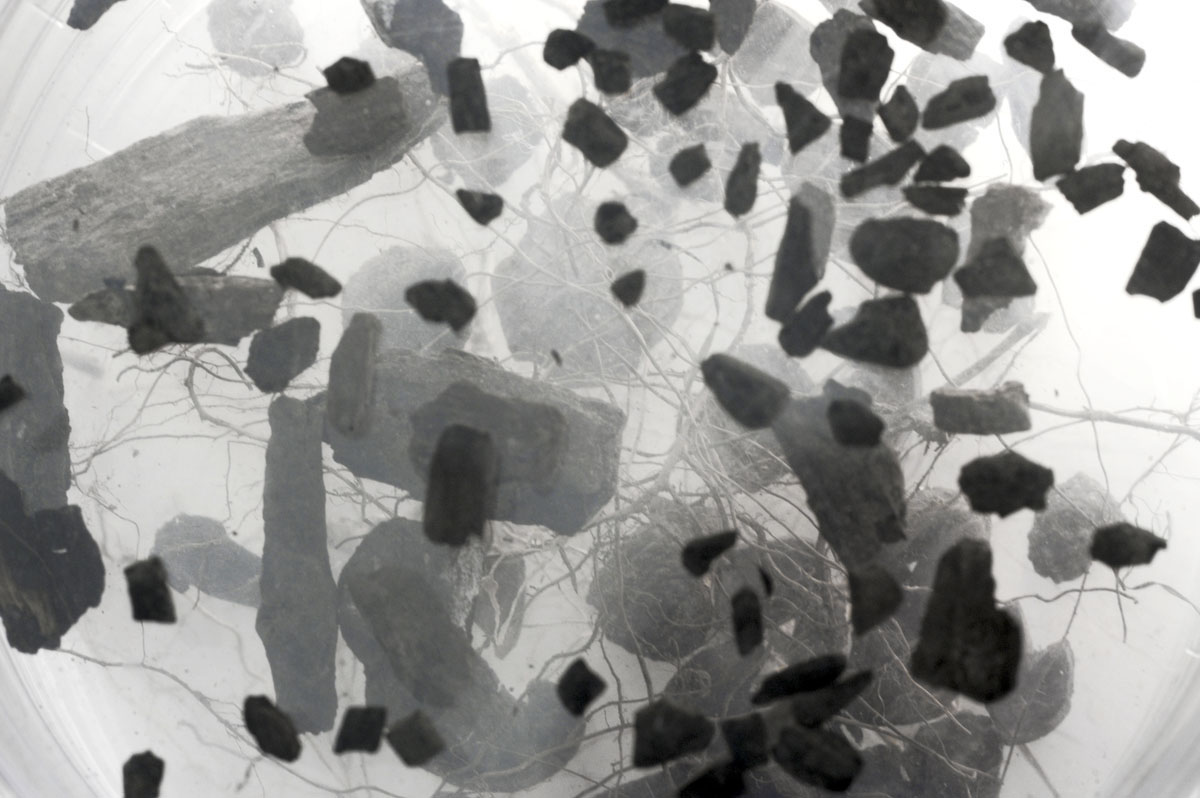
EMANUELA ASCARI
http://www.emanuelaascari.it/A forest is a complex organism that also includes the ground that it produces itself, as part of an ongoing regeneration process. The artist removed a piece of land from a conifer forest in the Fiemme Valley. The extracted material was then sifted and broken down into its visible elements before being put back together, in a meticulous work of separating and grouping together. This halted the natural process of decomposition of the elements, making the contents of the earth temporarily visible, without the surrounding soil, also allowing for increasingly refined disintegration of the composite elements. A learning process, with a 1:1 scale, the aim of which is to re-establish a bond with the under- ground and organic dimension of existence itself.
Thank to Bruno Maiolini for his collaboration in the production of the work.
